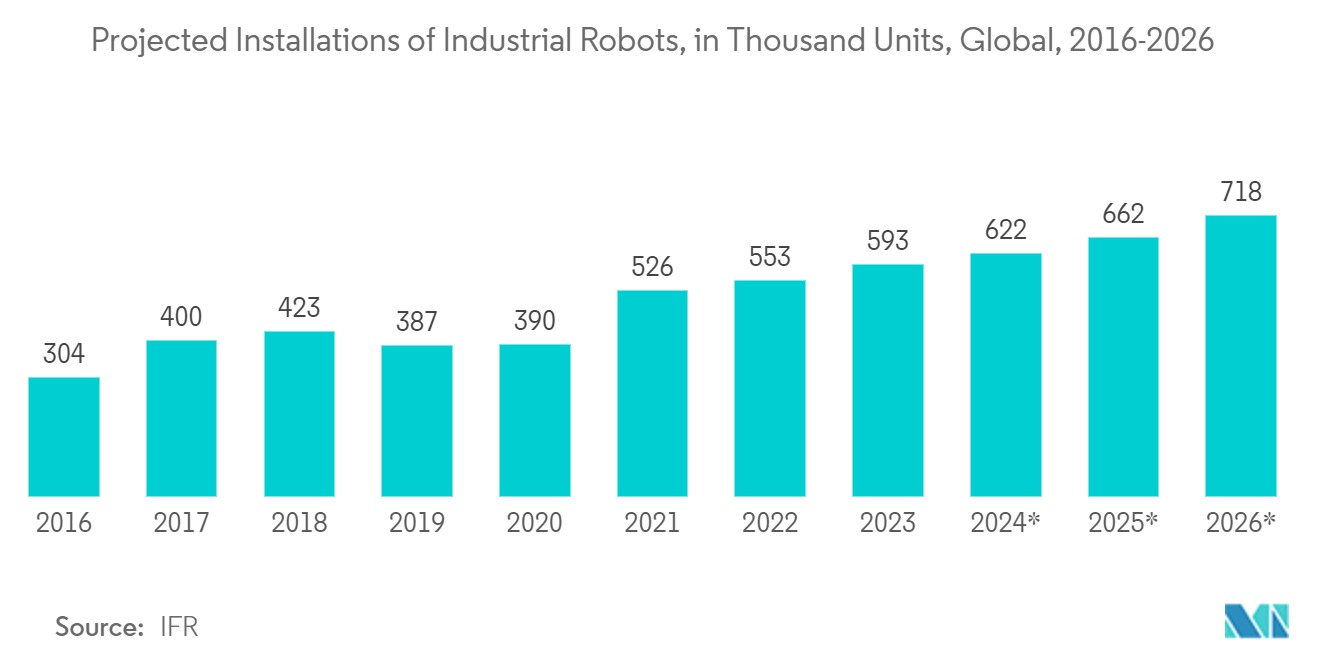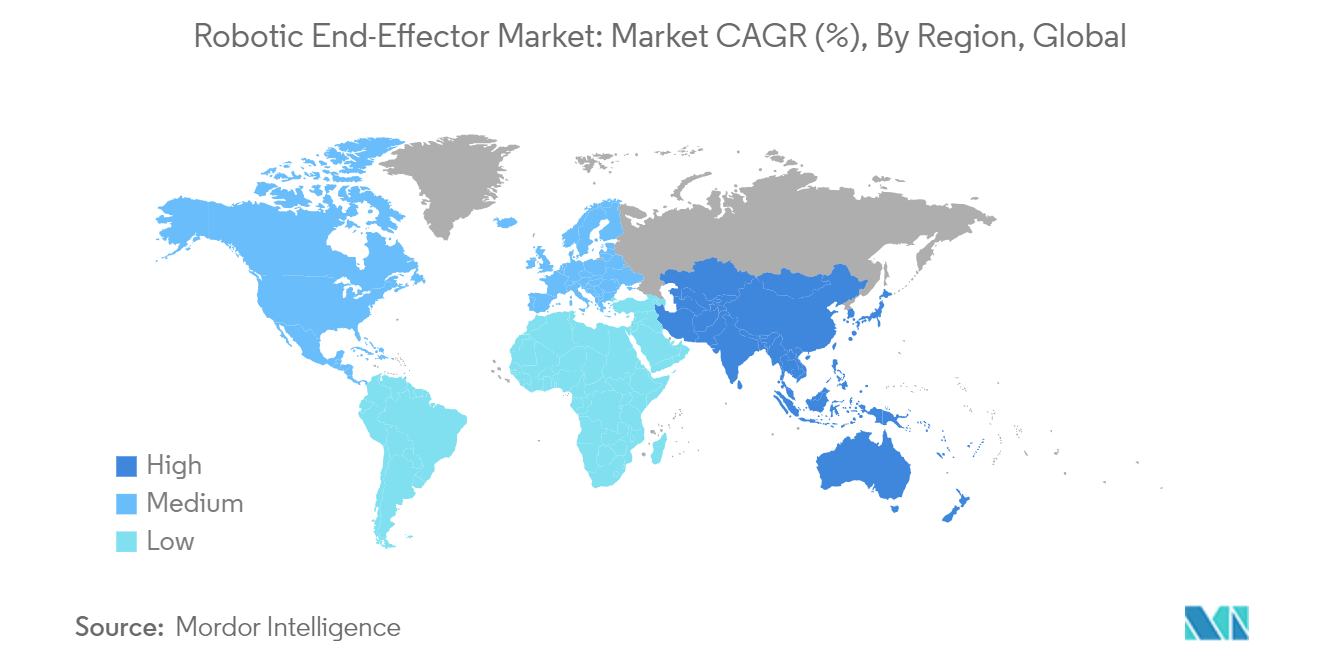Market Trends of Robot End-Effector Industry
Automotive End-User Segment is Expected to Hold Significant Market Share
- The automotive industry is one of the major adopters of robotics and automation. Prominent automotive manufacturers use robotics to assist in critical activities such as welding, painting, milling bits, cutters, machine tending, and parts transfer. Using robotics helps improve the product's quality while reducing the complexity of industrial operations.
- In automotive manufacturing, robot end-effectors play an important role in welding, painting, assembly, and material handling tasks. These end-effectors are designed to be versatile and precise, aiding production processes' efficiency and quality. End-effectors equipped with welding torches are used for welding components such as body panels, frames, and exhaust systems. These end-effectors ensure precise and consistent welds, improving the structure integrity of automotive parts.
- The automotive industry has the largest number of robots in factories worldwide. The International Federation of Robotics stated that the operational stock hit a record of about one million units, representing about one-third of the total number installed across all industries. According to IFR, global industrial robot shipments amounted to about 0.59 million in 2023, just a slight increase compared to 2022. Industrial robot shipments are projected to increase significantly in the coming years, and in 2026, they are expected to amount to about 0.71 million.
- Like many other industries, the auto industry wants to make the most of Industry 4.0, where "connected" machines communicate with one another and human operators to deliver workplace safety and productivity benefits. As a result, the rising need for automation in the vehicle industry affects automakers' attitudes about worker safety, resulting in a spike in the studied market.
- The automotive industry is also adopting Cobots or Collaborative robots to smoothen the manufacturing process. The increase of Cobots in regions like North America and Europe is expected to create a robust demand for end effectors. The trend of Industry 4.0 pushing the automation of traditional assembly lines in the automotive industry is also expected to increase the demand for collaborative robots and end-effectors.

Asia Pacific is Expected to Hold Significant Market Share
- The Asia-Pacific region is experiencing swift modernization and industrialization, leading to a shift toward automated processes in production industries and a decrease in the need for manual labor, which is impacting the growth of the market. Collaborative robots are increasingly utilized in the electronics and automotive sectors to improve efficiency and productivity.
- The latest industrial revolution, called Industry 4.0, has led to the advancement of new technologies, such as collaborative robots. These AI-powered robots have allowed industries to enhance efficiency, minimize mistakes, and streamline various processes. The improved safety in the workplace and increased production capabilities have encouraged industries in the area to invest in robotic systems.
- Countries with significant investments and advancements in technological automation have contributed to the widespread adoption of robots in the region. Japan is considered a hub for utilizing robotics and automation in manufacturing due to its advanced robotic industry and technology.
- The Chinese government initiated the 'Made in China 2025' policy. This policy has become a significant priority for the manufacturing industry in the country to maintain its position as the largest manufacturing sector. Chinese manufacturers are implementing smart manufacturing strategies such as Industry 4.0 and Industrial IoT to enhance global competitiveness and ensure future survival. As a result, it is anticipated that the end-effector market in China will experience growth.
- According to IFR, in 2022, the number of industrial robots installed in China reached a record high of 290,258, marking a 5% increase from the previous year. According to the Washington Information Technology and Innovation Foundation (ITIF), China's workforce has significantly more robots than predicted, with a ratio of 12.5 times higher than initially anticipated.
- The area has a solid presence in the field of robotics, which is beneficial for the overall expansion of the market. A few of the companies in this sector include OMRON Corporation, Kawasaki Heavy Industries Ltd, Fanuc Corporation, and Siasun Robot & Automation Co. Ltd.


